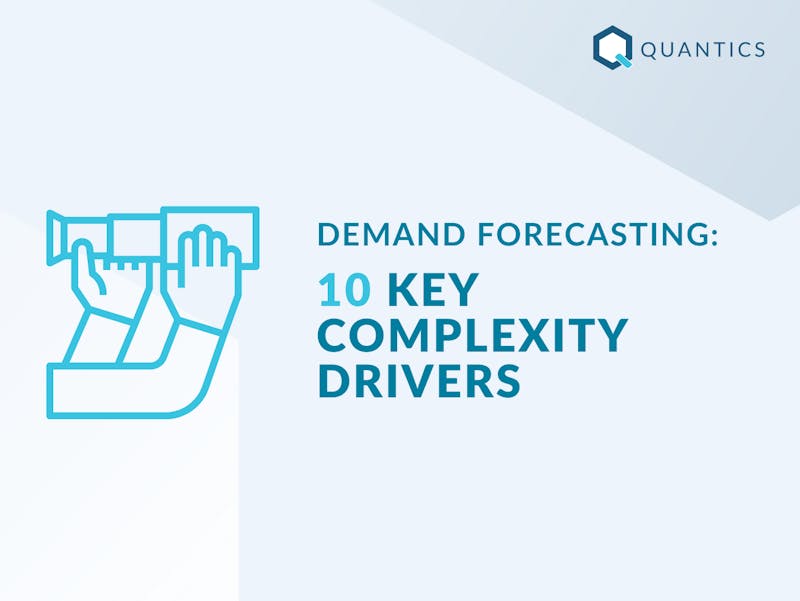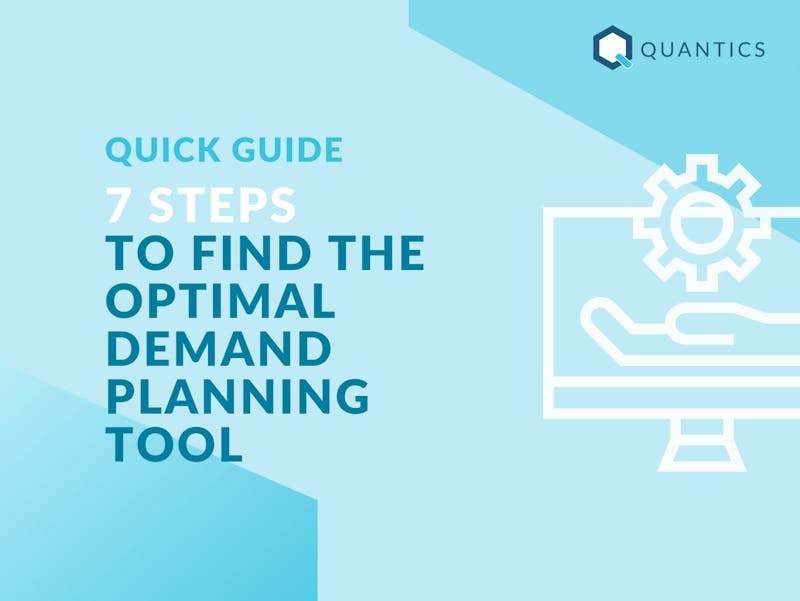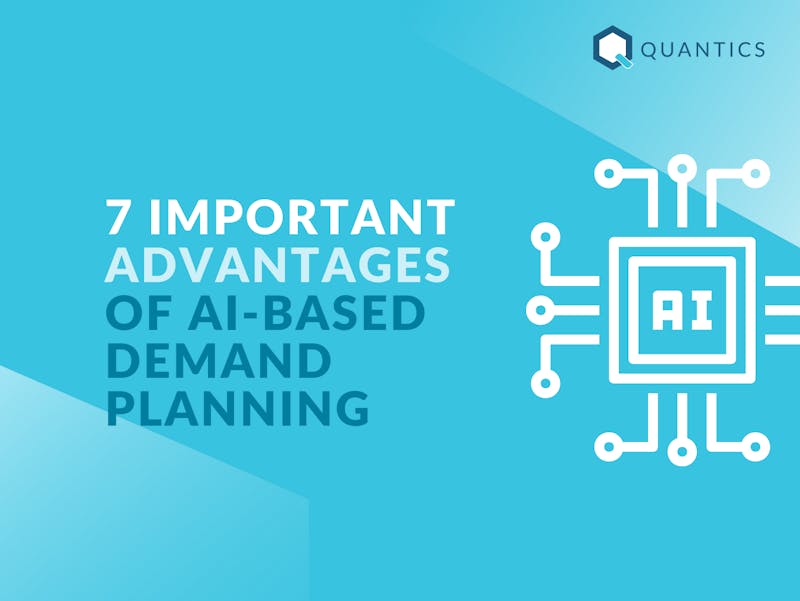Rolling Forecast: Benefits, challenges and implementation
If you are a controller, demand planner or member of a sales team who is involved in financial planning, you know how essential it is for your work to have a rolling forecast. In this post, you will learn everything you need to know about this powerful instrument to bring your forecasting process to the next level.
This post will answer the following questions: What is a rolling forecast? How can a rolling forecast help your company to be more flexible? What are the advantages compared to other methods? What are the challenges of using it?
Regardless of whether you are new to forecasting or just want to brush up on your memory, this post will provide you with all the information you need to get started. Let's dive in!
What is rolling forecasting and why should you care about them today?
Rolling forecasts, also known as rolling planning, is an approach to predict future business conditions based on past performance data and current trends.
Forecasts that are updated on a rolling basis can help organizations be more flexible by providing them with a "rolling window" of future events. This means that forecast plans are adjusted as new data becomes available, allowing business decisions to be based on the most up-to-date facts.
The graphic above shows an example of a quarterly forecast interval with a forecast time horizon of 12 months. This means that a new forecast is produced every three months, extending over another twelve months into the next fiscal year. During this process, actual data is included for each new quarter.
Depending on the requirements, rolling forecasts can be calculated on a daily or weekly basis.
How does a rolling forecast process help your business become more flexible and responsive?
Rolling forecasts offer your finance and demand planning team an instrument that leads to greater flexibility.
Firstly, rolling forecasts help you to stay up to date by providing an outlook on future developments. This means you can make better-informed decisions - from production to inventory to marketing.
Secondly, with rolling planning, forecasts are kept up to date so that you can react quickly to market changes. This is particularly important nowadays, as the market is becoming increasingly fast-paced. Companies today need to be able to adapt rapidly to supply chain disruptions as well as stakeholder needs. Rolling forecasts provide excellent support in this regard.
Finally, rolling forecasts help you to be proactive by giving you a head start. This allows you to prepare for future events calmly and minimizes the risk of being unprepared.
What are the advantages of using a rolling forecast?
Rolling forecasts have several advantages over usual instruments, especially in financial forecasting.
Flexibility
Rolling forecasts are far more adaptable than traditional budgeting techniques that are frequently based on fixed premises. You may modify your forecasts as new data comes in, which makes it simpler to react to market changes and ensure that your firm is always working with the most up-to-date information.
Better decision making
Real-time analytics with rolling forecasts provides you with timely data analysis. As a result, you can make better short-term judgments as long as there is a current forecast available. With conventional budgeting techniques, you may be forced to wait until the end of the fiscal year to receive up-to-date information - by then, it may be too late.
Reduced planning time
Rolling forecasts provide good support because they shorten the actual planning time. With traditional methods, you may have to spend months or even years collecting data for budgeting. On the other hand, with a rolling forecast, you can easily update your estimates as new financial data becomes available.
High forecast accuracy
The percentage of finance teams who say they consider a rolling forecast when making decisions is growing. Financial planning based on rolling forecast is more accurate since it includes data from the present as well as data from previous periods. The length of the forecast horizon is shorter, which helps decrease the likelihood that forecasts are based on assumptions that don't reflect reality.
What are some of the challenges associated with using a rolling forecast?
In addition to the many benefits that rolling forecasts bring, there are also some challenges that you should look at.
Resource conflict
One problem that can arise when creating a rolling forecast is a resource conflict. The conflict occurs when different teams within the company are vying for control. The marketing team, for instance, wants to increase sales, while the production team wants to maintain production numbers. This can lead to conflicts and reduce the effectiveness of the forecast.
Inaccurate data
Another issue is the quality of the data. In case the data is incorrect, the forecast's accuracy may be harmed. This can be an obstacle if you rely on historical data to predict future business performance. To fully exploit the potential of a rolling forecast technique full potential, both the accuracy and timeliness of the data should always be given top priority.
Lack of standardisation
The lack of uniformity across departments is also an issue. This may lead to confusion and make it difficult to compare data from various parts of the business. Therefore it is critical that all departments use the same methodology.
Resource intensity
Rolling forecasts might be more labor-intensive than traditional planning methods. It's because they need more data input and rely on frequent updates. To mitigate problems in this regard, it is important to set up interfaces so that data can be easily exchanged between different teams and tools already in use.
Data preparation
To make rolling forecasts as accurate as possible, you need to spend time reviewing and analyzing data. This process can be challenging, especially for companies that are already overloaded with other topics in this field. Planning for such data checks should not be underestimated.
When are rolling forecasts suitable?
Rolling planning is useful in various circumstances. It is beneficial for companies that meet the following criteria:
- Business activity in a volatile market environment
- Complex supply chain network
- Slow financial forecasting methods
- Many different products or services
- Different geographical locations and distribution channels
- Availability of a continuous data update process
- Need for rapid replanning
- Smooth data exchange between teams
If your business meets one or more of these criteria, you should consider a rolling forecast.
If your business meets one or more of these criteria, you should consider a rolling forecast.
In summary, a rolling forecast is a powerful tool that can help you make better decisions within a volatile business environment. A rolling forecast offers many advantages over traditional planning approaches, but also comes with some challenges. By understanding and successfully resolving those challenges, you can get the most out of this valuable approach for your business.
Implementing rolling forecasts in your planning process
There are a couple of ways to integrate a rolling forecast into your planning process. Of course, you can use Excel or Google Sheets for this. However, this can be difficult and time-consuming.
A better option is to use a specialized software tool developed for this purpose. Such a tool makes it easier to create and update a rolling forecast. In addition, such software offers various functions that help you analyze critical figures or develop plans and thus provide optimal decision support.
Furthermore, it is recommended to use cloud-based solutions that allow an easy exchange of data between different teams and existing systems. In particular, this is beneficial if your company already uses cloud-based solutions for other business processes.
Finally, you can also use a combination of the above approaches to best meet the needs of your organization. Whatever combination you choose, make sure you spend the necessary time and resources to get the most out of rolling forecasts.
Final thoughts
A rolling forecast process can help you improve the quality of your business decisions to achieve your goals. The approach offers many advantages over traditional forecasting instruments and most importantly supports a continuous planning process that helps with financial reporting as well as actual performance measurement.
If you understand and successfully overcome challenges that arise when using rolling forecasts you are guaranteed to increase your future performance and improve sales revenue.
One of the most important things to remember when using a rolling forecast approach is that regular data updates are required. This means that you need to spend time and resources on data analysis. If you are not able to do this, your rolling forecast will be inaccurate and less useful.
It should be mentioned that a rolling forecast is not a universal solution for all problems in planning. The approach should therefore be combined with other planning approaches to achieve the most accurate results.
What can be said is that rolling planning improves business decisions and budget control enormously. Whichever approach you choose, make sure you spend the necessary time and resources to get the best out of it for your business.
So, that's it: Now you have a good overview to decide whether implementing rolling forecasts makes sense for you.
About Quantics
Quantics is a self-learning forecasting software that helps business leaders, sales teams, and finance teams create precise forecasts in a fraction of time. The software allows you to quickly and accurately estimate demand or annual budgets by offering a fully automated forecast process.
In addition, you benefit from a powerful engine that boosts your forecasts by considering factors that might influence your sales revenue, such as weather, price indices, holidays or macroeconomic indicators.
Quantics brings your financial planning to the next level while saving both time and money. Make use of a driver-based forecasting approach to increase future performance and adapt to future market conditions at high speed.




